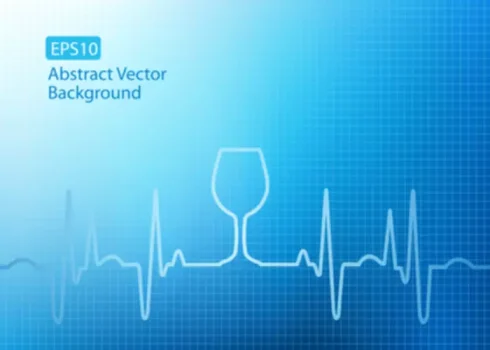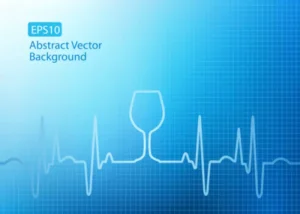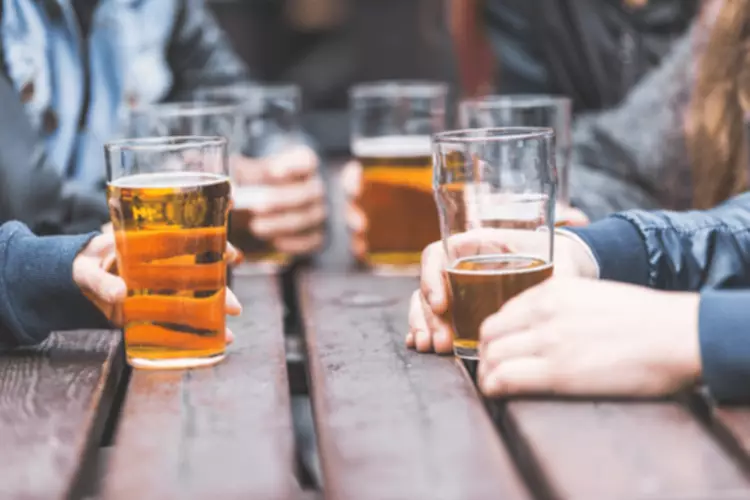
And ultimately, the best way to avoid having to flush alcohol out of your system is by drinking responsibly. The best you can do https://ecosoberhouse.com/ is take steps such as finding a designated driver, not drinking on an empty stomach, and having a friend around if the effects of the detoxing process are more intense. In fact, so much acetaldehyde is produced by your microbiome that gut acetaldehyde concentrations can reach levels 5-10x higher than in the rest of your body. At this point, all that acetaldehyde is absorbed out of the gut into the bloodstream. If you don’t have enough ADH or ALDH, your stomach will send the alcohol directly to the small intestine. From there, it hits your bloodstream and your brain, and you start feeling its effects.
Eat and Avoid Certain Foods
When these cells become activated, they release various stimulatory molecules. As a result, alcohol-induced Kupffer cell activation also contributes to the onset of hypoxia. A fast ADH or a slow ALDH are expected to elevate acetaldehyde levels and thus reduce alcohol drinking. These polymorphisms and their significance are discussed in the article in this issue by Quertemont and Didone.

How long does alcohol metabolism take?

For example, if two people each have blood alcohol levels of 20 mg/dL, the alcohol will metabolize in about an hour in each person, but their BAC can be very different. If you drink on a full stomach, the rate at which the alcohol and food moves from the stomach to the intestines slows down. Since alcohol is mainly absorbed from the intestines, this slows down absorption. While alcohol metabolism is extremely constant (0.016% per hour), alcohol absorption can vary substantially. The rate of alcohol absorption influences how rapidly your BAC will rise (not how fast your BAC will fall, because that reflects alcohol metabolism).
- A regular-sized drink will take 1 to 1.5 hours to process, no matter how much water you consume along with it.
- Acetate, produced from the oxidation of acetaldehyde, is oxidized to carbon dioxide (CO2).
- For example, as described in the previous section, lipid peroxidation leads to the generation of MDA and HNE.
- You can read more about acetaldehyde and the science underlying that first product here.
- So the rest of the alcohol molecules accumulate and leave the liver to go back into the bloodstream.
- On the other hand, eating a meal increases blood flow to the stomach, intestines, and liver.
Tips for Mindful Drinking
- Liver enzymes metabolize alcohol to acetaldehyde, a known cancer-causing chemical (4, 5).
- The art of cleansing has progressed immensely over several thousand years from simply scraping the skin to an exercise in relaxation and improvement in the skin’s health and appearance in the present day.
- When this balance is disturbed and an excess of ROS is present, a state known as oxidative stress results.
- And even occasional binge drinking episodes can have profound effects on your liver’s health over time.
Dermatologists can enhance the overall management of various skin disorders by advising their patients how to adjust their cleansing regimen to best suit their needs and achieve optimal results with therapy. Xerotic skin is seen in several dermatological disorders and also in the geriatric population as a part of natural aging due to decreased sebum production. Environmental factors, such as low humidity and wind may also exacerbate dryness. When you drink alcohol, it is quickly absorbed in the stomach and small intestines.

Tissue Damage, Metabolic Derangements, and Disease Associated With Ethanol Metabolism
Acetaldehyde is a very nasty molecule that wreaks havoc on your body and is responsible for a large share of the misery you might feel the day after drinking. You can read more about acetaldehyde and the science underlying that first product here. Mindful drinking can have a significant impact on reducing alcohol consumption and promoting a healthier relationship with alcohol. Take this quiz to learn how to be more mindful with your drinking habits. Alcohol metabolism rates indeed vary, and the liver’s ability to process alcohol at a rate of one standard drink per hour is a general guideline.
Alcohol poisoning is a two-phase condition also known as ethanol toxicity. The condition occurs when you drink large amounts of alcohol that affect the organs in your body. Breath tests for alcohol can detect alcohol within a shorter time frame, at about 4-6 hours. Any number above 0.02% is unsafe since you experience some loss of judgment and a decline in visual functioning. Urine tests can detect alcohol long after you’ve had your last drink by testing for traces of alcohol metabolites. The average urine test can detect alcohol up to 12 hours after drinking.

We understand that there are no shortcuts on the path to recovery, and our compassionate team offers unwavering support and drug addiction intensive care throughout your healing journey. We can help you or your loved one through the admissions process and begin recovering from addiction. The EtG urine test is essential when complete abstinence is required, such as during withdrawal or in professional settings with zero-tolerance policies. Harbor Care is here to help guide you from a place of struggle to one of strength and recovery in your battle against substance use. Our dedicated team offers supportive, evidence-based outpatient services tailored to your unique journey. This article aims to provide a comprehensive understanding of what flushes alcohol out of the system, empowering individuals to take control of their recovery and well-being.
Through both of these mechanisms, ROS play an important role in cancer development (i.e., carcinogenesis), atherosclerosis, diabetes, inflammation, aging, and other harmful processes. Under normal conditions, a balance between ROS and antioxidants exists in the cells. When this balance is disturbed and an excess of ROS is present, a state known as oxidative stress results. Most of the ethanol in the body is broken down in the liver by an enzyme called alcohol dehydrogenase (ADH), which transforms ethanol into a toxic compound called acetaldehyde (CH3CHO), a known carcinogen. However, acetaldehyde is generally short-lived; it is quickly broken down to a less toxic compound called acetate (CH3COO-) by another enzyme called aldehyde dehydrogenase (ALDH). Acetate then is broken down to carbon dioxide and water, mainly in tissues other than the liver.
Drinking water cannot sober you up, but it can prevent you from drinking too much too fast. Since you metabolize alcohol over a set amount of time, drinking water between drinks allows your liver time to process the alcohol. How long does it take to reset your body from alcohol Typically, after an individual stops drinking, their withdrawal symptoms will subside after about four to five days after their last drink. However, the timeline for detox depends on factors like how much a person used to drink, how long they’ve been drinking, etc. While exercise doesn’t directly speed up the elimination of alcohol from your system, regular physical activity can boost your metabolism, helping your body process alcohol more efficiently over time. Alcohol that is not metabolized on its first passage through the liver continues to circulate throughout the body as an active drug.
Concerned About Your Drinking? Take the Alcohol Addiction Test
Stress what removes alcohol from the body can cause a slight uptick in elimination rates, making it 0.18g/L/h on average. Eating probiotic-rich foods can help your digestive system recover from the consumption of alcohol more quickly. In addition to drinking plenty of water, doctors recommend consuming mineral salts such as tomato or vegetable juice and salted broth to replenish electrolytes and restore a healthy electrolyte balance quickly.
